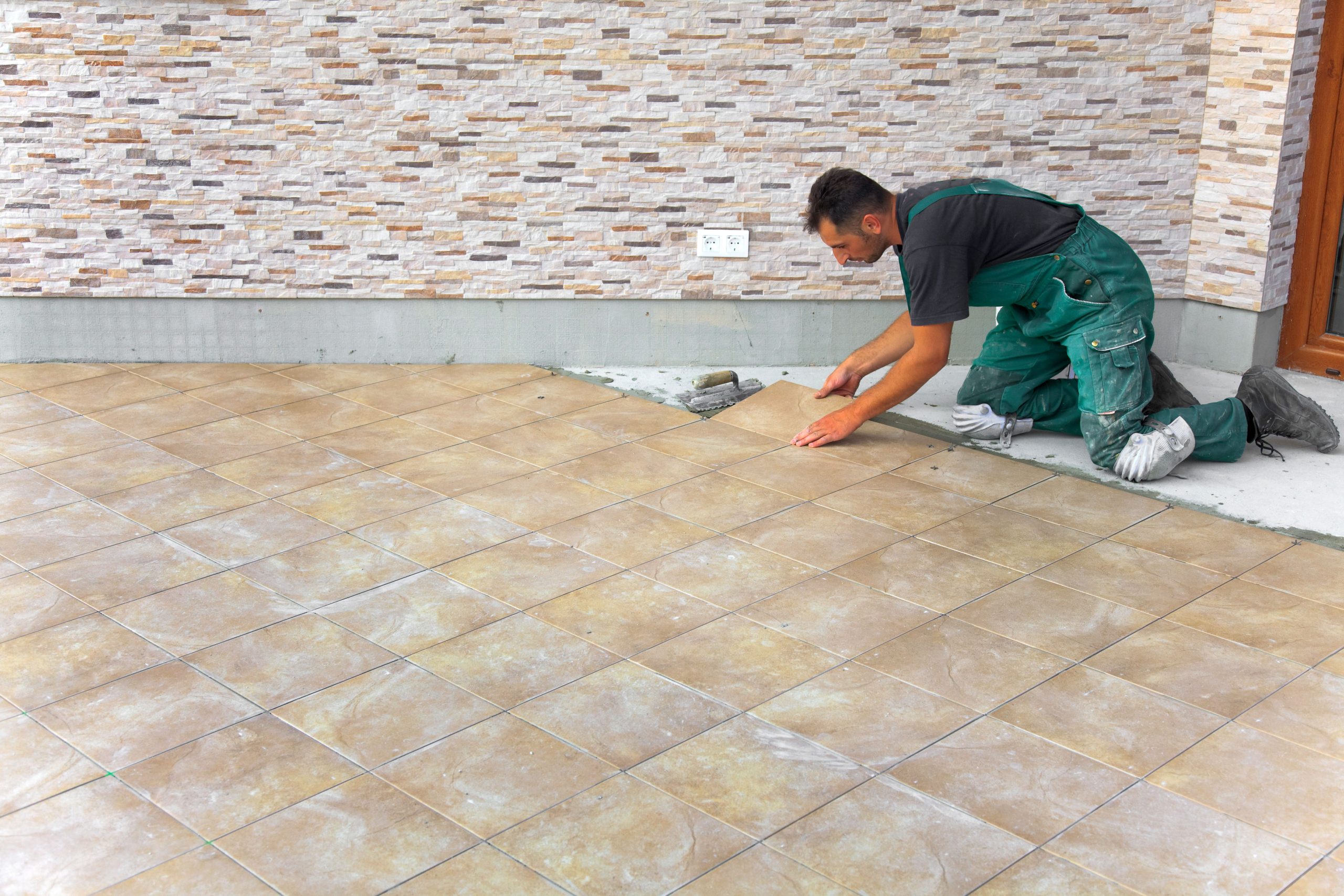The market value of ceramic tiles is a complex amalgamation of various market dynamics, economic factors, and consumer preferences. Understanding these intricacies offers pivotal insights into how businesses and stakeholders can position themselves effectively in the global market. This article delves into the fundamental aspects that shape the ceramic tile market, providing a comprehensive guide for industry players looking to unlock potential avenues of growth for floor installation.
Global Market Overview
Historically, the ceramic tile market has showcased a consistent upward trajectory, with growth influenced by urbanization and increasing construction activities worldwide. Initially rooted in traditional craftsmanship, the market has evolved significantly to incorporate modern manufacturing technologies. These advancements have allowed for increased production capacities and a more extensive range of design options. Factors such as growing infrastructure development in emerging economies have also played a crucial role in this growth. Furthermore, the adaptation of ceramic tiles in innovative applications such as facades and artistic installations has contributed to market expansion.
The demand for ceramic tiles is currently driven by several trends, including the increased preference for aesthetically pleasing and durable floor installation. Homeowners and commercial establishments alike are gravitating towards ceramic tiles for their versatility and design flexibility. These tiles cater to various styles and preferences, ranging from traditional to contemporary designs, which bolsters market appeal. Innovation in texture and color variations enhances consumer interest, highlighting the integration of fashion with functionality. According to Statista, the U.S. ceramic tile market was valued at over $4.7 billion in 2023, underscoring its substantial footprint in the industry.
The ceramic tile market is marked by regional variances, influenced by cultural preferences and infrastructural developments specific to regions. For instance, Europe and North America hold a significant share due to their mature markets and stringent aesthetic standards. The Asia-Pacific region, however, is experiencing rapid growth driven by urbanization and increasing residential construction. Local manufacturers also play a pivotal role in shaping regional markets, adhering to cultural aesthetics while meeting global standards. Understanding these regional differences is essential for businesses aiming to expand their footprint internationally.
Economic Factors Affecting Ceramic Tile Value
The cost and availability of raw materials significantly influence the ceramic tile market. Changes in the prices of core materials such as clay, kaolin, and feldspar directly impact production costs. Market dynamics, such as supply chain disruptions or geopolitical tensions, can lead to price fluctuations, affecting the overall market value. Manufacturers often need to balance material costs with competitive pricing, affecting profitability margins. Consequently, efficient sourcing and material optimization play vital roles in sustaining market competitiveness.
Labor costs and production expenses are critical components affecting the market value of ceramic tiles. As the production process involves sophisticated machinery and skilled labor, variations in wages and energy costs directly impact the pricing strategy. Implementing automation and lean manufacturing techniques can help mitigate rising production expenses, enhancing operational efficiency. Additionally, manufacturers face the challenge of meeting increasing demand while controlling costs, especially in regions with high labor expenses. Balancing these factors effectively is essential for maintaining competitive pricing in the market.
Supply and demand dynamics play a crucial role in determining the tile floor installation value. The global market is influenced by fluctuating demand patterns, impacted by construction trends, economic growth, and consumer preferences. A surplus or deficit in supply can cause price adjustments, affecting market stability. Market players need to predict demand trends accurately to align supply capabilities, avoiding overproduction or shortages. Strategic inventory management and demand forecasting are vital to balancing supply and demand effectively.
Consumer Trends and Preferences
Consumer preferences in design and aesthetics significantly shape market demand for ceramic tiles. Style preferences vary across demographics, influencing color, texture, and pattern choices. Trends such as minimalism, vintage, or contemporary designs often dictate purchasing decisions, prompting manufacturers to customize product lines accordingly. Staying attuned to shifting style trends is critical for businesses aiming to capture diverse consumer markets. The flexibility to cater to personalized aesthetic demands is essential for maintaining a competitive advantage.
Sustainable and eco-friendly choices are becoming a priority for modern consumers, influencing their decisions regarding ceramic tiles. The shift towards environmentally conscious living drives demand for products that minimize ecological impact. Manufacturers are adopting green practices, such as using recycled materials and reducing carbon emissions, which appeal to sustainability-focused buyers. The integration of eco-labels and certifications further reinforces consumer trust and encourages environmentally responsible purchasing. Embracing sustainability principles not only meets consumer expectations but also positions companies for growth in an eco-conscious market.
Customization and personalization in ceramic tiles cater to consumer desires for unique and distinct home decor solutions. The ability to tailor tiles to specific sizes, colors, and designs offers tremendous value for discerning customers. Advancements in digital printing and manufacturing technologies have enabled cost-effective customization, broadening market appeal. Offering bespoke solutions enhances customer satisfaction, fostering brand loyalty and repeat business. Personalization trends highlight the importance of consumer-centric strategies in staying competitive.
Technological Innovations in Tile Manufacturing
Advancements in material science have revolutionized ceramic tile manufacturing, offering new possibilities for product innovation. Developments in nano-coatings and composite materials enhance tile properties, creating products with improved strength, resistance, and aesthetic characteristics. These innovations enable manufacturers to cater to diverse consumer requirements, such as anti-bacterial tiles or those with self-cleaning capabilities. Moreover, enhanced material compositions contribute to sustainability by improving lifetime and reducing wear and tear. Material science advancements underscore the importance of R&D in maintaining a competitive advantage.
Automation and efficiency improvements significantly impact ceramic tile production processes, enhancing productivity and cost-effectiveness. Advanced robotic systems and automated lines streamline manufacturing operations, reducing labor costs and increasing output precision. These technologies minimize production downtime and enhance quality control, leading to higher consumer satisfaction. Investment in automation also helps manage resource utilization, contributing to sustainable manufacturing practices. Efficiency improvements facilitate competitive pricing and greater market reach, benefiting both manufacturers and consumers.
Digital printing technologies have transformed ceramic tile design, offering limitless creative possibilities for manufacturers. Through high-resolution printing, intricate patterns and textures can be reproduced with remarkable detail and accuracy. This technology enables mass customization, allowing for personalized design options at scale, meeting diverse consumer needs. Digital printing also streamlines production, reducing lead times and enhancing flexibility in responding to market trends. Embracing digital innovations positions companies to capitalize on emerging design tastes and maintain a competitive edge.
Sustainability and Environmental Considerations
Recycling and waste management are integral components of sustainable ceramic tile production, minimizing environmental impact. Manufacturers are adopting innovative recycling processes that reclaim unusable tile fragments, contributing to a circular economy. Utilization of waste materials, such as post-industrial recycled content, aligns with eco-friendly practices, appealing to environmentally conscious consumers. Efficient waste management reduces landfill contributions, promoting sustainable production methodologies. Emphasizing recycling enhances brand image, portraying a commitment to social responsibility.
Energy efficiency in ceramic tile production is a critical focus for manufacturers aiming to reduce carbon footprints and lower operational costs. Implementation of energy-saving technologies and renewable energy sources optimizes production processes, decreasing emissions. Eco-friendly facilities and equipment upgrades contribute to reduced energy consumption, promoting sustainable manufacturing. These practices align with global environmental standards, attracting sustainability-driven consumers and stakeholders. Prioritizing energy efficiency is a strategic approach to encourage innovation and propel market growth.
Understanding historical and current trends, coupled with a detailed examination of economic, consumer, and technological factors, equips businesses with the tools for informed decision-making when it comes to floor installation. The emphasis on sustainability reflects consumer priorities and aligns with global environmental goals, underscoring its significance in future market dynamics. As the industry continues to evolve, key players need to remain agile, adapting to technological advancements and regional differences to harness their full potential. For more information about the services that we offer, reach out to our incredible team at Smith Family Carpets Inc.


